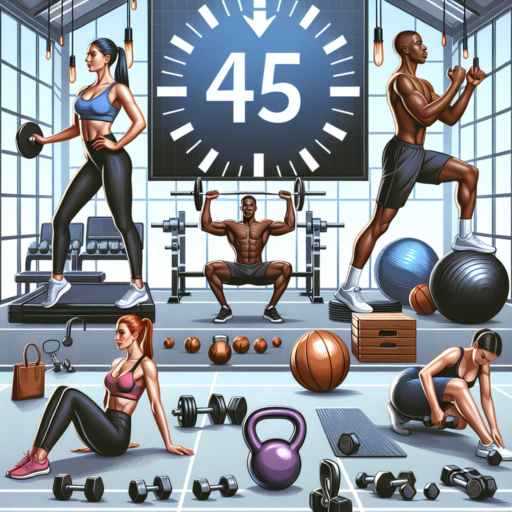Why Upper Body Strength Matters for Runners
Many runners focus on building their lower body strength, overlooking the critical role the upper body plays in enhancing running performance. Strengthening the muscles in your arms, shoulders, and back can actually make a significant difference in your running efficiency. This aspect of training helps in maintaining proper form, improving endurance, and avoiding injuries, making it a crucial component for both amateur and professional runners alike.
Upper body strength contributes to better posture during runs. A strong upper body helps in maintaining an upright posture, reducing the likelihood of slumping forward. This not only improves lung capacity and oxygen intake but also allows for more efficient movement. Runners with strong upper bodies can maintain a consistent form even when fatigue sets in, which is essential for long-distance running.
Furthermore, the coordination between the upper and lower body during a run can significantly impact performance. The arm swing works in conjunction with leg movement to propel the body forward. Strong and well-conditioned upper body muscles contribute to a more powerful arm swing, which in turn, can increase stride length and speed. Besides enhancing performance, focusing on upper body strength also plays a pivotal role in injury prevention by supporting the joints and reducing the strain on the lower body.
The Benefits of Weight Training for Runners
Integrating weight training into a runner’s regimen is not just about enhancing performance; it’s a strategy to fortify the body against the strenuous demands of long-distance running. The primary benefit lies in increased muscle strength and endurance, which can lead to significant improvements in running efficiency and speed. Strength training exercises, particularly those focusing on the lower body and core, help runners maintain optimal form, especially towards the end of races when fatigue sets in, thereby minimizing the risk of injury.
Another key advantage of weight training is its role in improving bone density. Runners, by the very nature of their sport, subject their bones to continuous impact, which, while it can stimulate bone strengthening, also poses the risk of stress fractures if the bones are not robust enough to handle the impact. Regular weight-bearing exercises increase the density of bones, providing a solid foundation that can withstand the repetitive stress of running, thus reducing the likelihood of injury.
Weight training also enhances running economy, which is a critical factor in overall running performance. This term refers to the amount of energy a runner uses at a given pace. By strengthening the muscles, tendons, and ligaments through weight training, runners can improve their efficiency, using less energy for the same amount of work. This efficiency gain translates into the ability to run faster for longer periods, considerably boosting performance in races and endurance runs.
Getting Started: Upper Body Weight Training Basics
Embarking on an upper body weight training routine can be the stepping stone to achieving your fitness goals, enhancing strength, and improving overall physical health. Essential to proper fitness development, upper body exercises encompass a wide range of movements designed to target the major muscle groups, including the chest, shoulders, back, arms, and abdominals. Understanding the basic fundamentals can not only safeguard you against injuries but also ensure a balanced and effective workout.
Identifying Your Starting Point
Before diving into any workout regimen, it’s crucial to assess your current physical condition. This self-assessment will guide you in choosing the right starting weights, ensuring you don’t overestimate your capacity and risk injury. Beginning with lighter weights allows your body to adapt to new movements, focusing on form and technique rather than lifting heavy from the get-go. Gradual progression is key to effective strength building and muscle development in upper body weight training.
Building a Well-rounded Routine
Creating a balanced upper body workout involves selecting exercises that target all the major muscle groups. Incorporating a variety of movements such as push-ups, pull-ups, dumbbell presses, and rows can ensure comprehensive muscle engagement. For beginners, it’s advisable to start with compound exercises that work multiple muscle groups simultaneously, thereby maximizing your workout efficiency and reducing the time spent in the gym. Consistency, combined with gradual increments in weight and intensity, will lead to notable improvements in strength and muscle tone over time.
Essential Upper Body Exercises for Runners
While the focus for runners often lies on building lower body strength and endurance, incorporating upper body exercises into your routine is equally crucial. Strong shoulders, chest, back, and arms can improve running posture, efficiency, and speed. Let’s delve into some key exercises that every runner should consider to achieve a balanced and powerful physique.
Push-Ups: The Foundation of Upper Body Strength
Push-ups are a versatile exercise that targets the chest, shoulders, and triceps. Not only do they build muscle, but they also increase core stability crucial for runners. Begin with standard push-ups, focusing on maintaining a plank position and lowering your body in a controlled manner. For variety, experiment with incline and decline push-ups to target different muscle groups.
Plank Variations for Core and Shoulder Stability
Planks are not just about the core; they are also an excellent way to build shoulder stability and endurance. Incorporating side planks, extended planks, and plank shoulder taps can significantly enhance upper body strength vital for runners. These variations not only work on the shoulders but also engage the entire upper body, contributing to better running posture.
Upper body strength is indispensable for runners seeking to enhance their performance and reduce the risk of injury. Exercises like push-ups and planks not only fortify the chest, shoulders, and arms but also contribute to a stronger core. Integrating these exercises into your training regimen will not only improve your running efficiency but also ensure a well-rounded approach to fitness and health.
How to Incorporate Weight Training Into Your Running Routine
Incorporating weight training into your running routine can significantly enhance your performance and reduce the risk of injury. It’s not just about lifting heavy; it’s about strategic exercises that complement your running. This integration requires understanding of the specific strength workouts that can benefit runners the most.
Identify Key Muscle Groups
Focusing on key muscle groups critical for runners is crucial. These include the glutes, calves, quads, hamstrings, and core. Building strength in these areas can lead to improved running efficiency and endurance. Incorporating exercises such as squats, deadlifts, calf raises, and planks can make a notable difference in your running capabilities.
Plan Your Weekly Schedule
Balance is essential when combining weight training with running. It’s advisable to plan your weekly schedule to prevent overtraining. A good strategy involves alternating running days with weight training days and ensuring at least one rest day. This approach allows your muscles to recover and grow, ultimately enhancing your running performance.
Remember, the integration of weight training into your running routine should be gradual. Start with lighter weights and fewer sessions, gradually increasing as your body adapts. This slow progression prevents overuse injuries and allows for a smoother blending of these two types of physical activities into your regimen.
Advanced Upper Body Workouts for Competitive Runners
Competitive runners often focus predominantly on their lower body strength and endurance. However, advanced upper body workouts play an equally crucial role in enhancing overall performance. These exercises not only improve posture and running efficiency but also significantly contribute to better lung capacity and balance. Emphasizing the upper body could be the game-changer for runners looking to gain that extra edge in competitions.
Key Components of an Effective Upper Body Routine
For runners aiming to elevate their performance, integrating a mix of strength training and core stability exercises is imperative. This blend helps in developing a more powerful arm swing and an upright posture, essential for optimal running mechanics. Exercises such as pull-ups, push-ups, and rows augment upper body muscle strength, while planks and rotational exercises enhance core stability, directly impacting a runner’s speed and endurance.
Incorporating Resistance Training
Incorporating resistance training into an upper body workout routine significantly impacts a runner’s efficiency on the track. Utilizing equipment like dumbbells, kettlebells, or resistance bands can introduce the necessary challenge to muscle groups, fostering strength gains without bulk. Specifically designed resistance workouts can also minimize the risk of injury by creating a balanced muscular structure, supporting both the intricate movements and the repetitive impact of running.
Ultimately, the fusion of strength, endurance, and flexibility exercises tailored for the upper body equips competitive runners with a comprehensive training regimen. This holistic approach not only improves running performance but also guards against common running injuries, reinforcing the runner’s capacity to face the demanding nature of competitive racing.
Common Mistakes in Upper Body Training for Runners
When runners focus on improving their performance, the emphasis often heavily lies on leg strength and endurance. However, the upper body plays a crucial role in running efficiency and speed. Unfortunately, many runners fall into the trap of either neglecting upper body training altogether or approaching it incorrectly. Understanding these common mistakes can greatly enhance a runner’s regimen for better overall performance.
Ignoring Core Strength: One significant oversight is underestimating the importance of core strength. The core stabilizes the upper body, maintaining correct posture and balance during a run. Without a strong core, runners are more likely to slouch, leading to inefficiency and potential injury. Incorporating exercises that target the abs, obliques, and lower back is essential for a balanced upper body workout plan.
Focusing Solely on Isolation Exercises: Another common mistake is prioritizing isolation exercises over compound movements. While bicep curls and tricep extensions might improve muscular definition, they offer limited benefits to running performance. Compound exercises like pull-ups, push-ups, and rows not only engage multiple muscle groups simultaneously but also mimic the complex, coordinated movements involved in running. This approach ensures that the strength gained is functional and directly translatable to improved running efficiency.
Lastly, runners often overlook the importance of consistency and progression in their upper body training. Just like with lower body or endurance training, gradually increasing the intensity and complexity of the workouts is vital for continuous improvement. Not regularly updating the training routine can lead to plateaus, diminished results, and an increased risk of injury.
Nutrition Tips for Runners Focusing on Muscle Gain
Many runners focus on endurance and speed, often overlooking the significance of muscle strength in enhancing performance. Gaining muscle not only boosts speed but also improves overall health. For runners aiming to increase their muscle mass, optimizing nutrition is key.
Proper Protein Intake
Protein is the building block of muscle. For muscle gain, runners should aim to consume 1.2 to 2.0 grams of protein per kilogram of body weight daily. Incorporating lean meats, fish, dairy, and plant-based proteins can ensure a balanced intake. Timing also matters; consuming protein-rich foods or supplements within 45 minutes after a run can significantly improve muscle repair and growth.
Carbohydrates are Essential
While protein often takes the spotlight in muscle gain, carbohydrates are equally important. They replenish glycogen stores used during running, aiding in recovery and fueling the muscles for growth. Focusing on complex carbohydrates, such as whole grains, vegetables, and fruits, provides a steady energy source, enhancing both endurance and strength training outcomes.
Stay Hydrated
Hydration is crucial for overall health and optimal muscle function. Dehydration can lead to reduced performance, hindered muscle recovery, and even muscle breakdown. Runners should aim to drink at least 8-10 glasses of water daily, with an emphasis on increasing intake on training days. Incorporating electrolyte-rich fluids post-run can also help replenish salts lost through sweat, promoting better muscle recovery.
Measuring Progress: Tracking Your Upper Body Strength Gains
Keeping a close eye on your upper body strength progress is crucial for tailoring your workout routine to achieve optimal results. Often, the most significant gains are not immediately visible, making consistent monitoring a must. Initiating a tracking system allows for precise adjustments to your training, ensuring that you consistently move towards your strength goals. Understanding the various metrics and methods to track progress can transform your approach to fitness.
Establishing a Baseline
Before diving into the nuances of progression tracking, it’s essential to establish a baseline of your current strength levels. This involves performing a series of exercises designed to test the maximum weight you can lift or the highest number of repetitions you can achieve for specific upper body exercises. It is important to record these initial metrics accurately as they serve as the foundation for measuring future progress. Similarly, taking before photos and measurements of your upper body can provide visual evidence of your gains over time.
Effective Tools for Tracking Progress
Technology and traditional methods both offer effective solutions for tracking your upper body strength development. Apps designed for fitness tracking can log your workout details, including the type of exercise, weights lifted, and repetitions completed. Additionally, keeping a physical workout journal allows for a more personalized record, where you can note down not just your workout specifics but also how you felt during the exercise, contributing to a holistic view of your progress. Consistency in using these tools plays a pivotal role in accurately assessing your strength gains.
Understanding and Interpreting Progress
Interpreting the data correctly is as important as collecting it. An increase in the weight you can lift or the number of reps you can perform over time indicates improvement in your upper body strength. However, progress can also manifest in other ways, such as reduced fatigue during workouts or the ability to perform exercises with better form. Recognizing these indicators is vital for staying motivated and adjusting your training program to align with your evolving strength levels.
No se han encontrado productos.
Success Stories: How Upper Body Strength Transformed My Running
Many runners focus on the power in their legs as the cornerstone of speed and endurance. Yet, it’s the stories of transformation through upper body strength that are capturing the attention of the community. By incorporating targeted upper body workouts, runners have experienced not just improved posture, but also significant enhancements in their running performance. This leap in performance underscores the symbiotic relationship between upper body strength and running efficiency.
One common thread in these success stories is the role of consistency. Runners who have seen the most profound transformations didn’t just dabble in upper body training; they made it a fundamental part of their regimen. Exercises like push-ups, pull-ups, and planking became as routine as their daily runs. Over time, these athletes reported not just an increase in upper body muscle tone, but also a notable improvement in their breathing, stamina, and even pace.
The psychological impact of incorporating upper body strength training cannot be overstressed. Runners often describe a newfound sense of balance and power during their runs, attributing it to the strength and stability gained from their upper body workouts. This mental edge, coupled with physical improvements, has been a game-changer, pushing them to achieve milestones previously thought unattainable. Such narratives serve as compelling evidence that the pursuit of a well-rounded training regimen is essential for any serious runner looking to break barriers.




